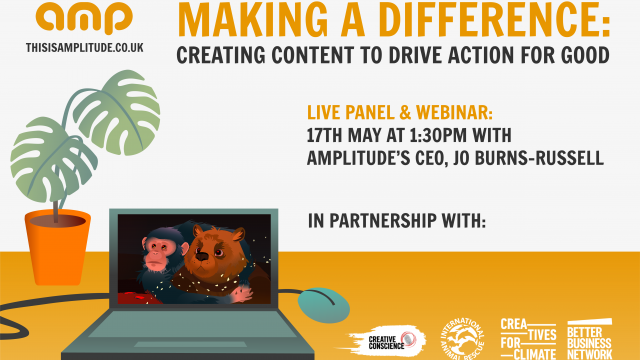The Elusive Instagram Algorithm
Hello! Welcome back to Tom’s Marketing Tales! Each blog, I’ll be discussing one topic related to the world of marketing. In this one I will be discussing the Instagram algorithm, my knowledge based on research I’ve conducted around it, the struggles of growing a business account, and potential solutions to these challenges.
Of course, I feel it’s important to note that, as an apprentice, I’m still early in my marketing journey and am still learning when it comes to discussing social media algorithms. I merely aim to discuss my experiences so far with managing the Amplitude instagram account and the lessons I have learned along the way.
Without further ado, Let’s begin!

What is an “Algorithm”?
A quick google search will tell you that an algorithm is “a process or set of rules to be followed in calculations or other problem-solving operations, especially by a computer.” Great! But what does this really mean when it comes to social media?
From what I understand, a social media algorithm is built with the goal of providing its users with the content they want to see. Simply put, they will do this based on data they collect whilst you use the platform, and an algorithm will do this surprisingly fast! Most of the mainstream social media platforms may even use multiple algorithms to achieve this goal.
Of course, a platform like Instagram really wants its users to use the platform as frequently and for as long as possible because this would give Meta (the owner of Instagram) more money. This also provides the users with the opportunity to use the algorithm to grow their respective accounts. Which begs the question, how does the Instagram algorithm work and how can we use its functionality to our advantage?
How does the Instagram Algorithm work?
Out of all the algorithms I have conducted research on, I have found that the Instagram algorithm is the most simple to understand. Of course, I may end up regretting that claim in the future.
The Instagram algorithm puts heavy emphasis on engagement. Or, more specifically, your followers’ level of interaction with the content you post (such as liking, commenting and sharing a post.) It would be fair to assume that the quality of your content would dictate this response, but I am willing to bet that a video of a dog filmed on a phone created in 5 minutes would outperform a highly edited business post filmed on a Canon EOS M50 Mark II that took a week to make.
But that hardly seems fair, right? Well, this is where the life rule of “working smart, not hard” comes into play. The dog video would be more likely to perform well because users are more likely to comment, like and share the video to their friends and family (which means the posts level of engagement is high.) Whereas the more business-like post may get liked by most people that view it, but users are far more unlikely to comment and share this post in comparison to the dog video.
To provide an example, the first ever post I made on the Amplitude Instagram account was a montage style reel of me being greeted by our dogs every time I walked into the office. This performed very well, getting 140 likes compared to our previous posts like rating of 4. Furthermore, after viewing our Instagram analytics the next day, I found that our number of accounts reached that week had gone up by a mind boggling 231,200%.
The next post I made a few days later was a behind the scenes video of a shoot we did with Gloverall. This performed decently, being viewed 1,500 times but only being liked 14 times.
In short, people were seeing the video, they just weren’t engaging with it. So am I saying that only dog content will perform well on Instagram? Of course not, there are many ways to increase the level of engagement in your posts and there are multiple types of posts that can work well, especially for businesses.
How do we work around the Instagram Algorithm?
So, we have established that our main goal should be to get our audience engaged with the content we push out. So how do we do that? Whilst the quality in production is important for our posts and especially our brand, I believe that the type of posts that we publish is even more important.
That’s all well and good for solo accounts and influencers, but what do we post as a business that would cater towards the algorithms needs? The obvious one for us here at Amplitude is dog content, as mentioned before. The obvious problem with that is that it’s almost impossible to use dog content to promote us as a Media Agency. Whilst Ralph, Rosie, Luna and Bonnie will always steal the spotlight, we’re not running a dog centre here at Amplitude (as much as we’d love to!)
So whilst occasional dog content is always good, what should a business post alongside it? Well, behind the scenes footage is great to post as photos, videos and stories. For your followers that care about your brand, behind the scenes content is always interesting for them to see and would often warrant a like and a comment. Along with this, consistently creating posts showcasing your company culture is great for your already existing audience as it keeps them up to date with your company’s core values and personality.
Consistency is also key when it comes to growing on Instagram. If you have an account that is above 100 followers, you’ll have the privilege of accessing your Instagram Insights (which is just another word for analytics.) This will tell you when the best time to post is based on when your followers are on Instagram. Working around these statistics consistently will stimulate growth much faster, and will increase the likelihood that your posts are seen by your audience.

The struggles of running a business account
So we’ve established the very basics of how the Instagram algorithm works and how it shows its users the content they want to see. We have also established what kind of content to post in order to increase engagement. And as far as social media algorithms go, it’s fairly simple, right? So, why have I described the algorithm as “elusive” in the title?
Simply put, it’s the business side of things that makes it tricky to cooperate with the Instagram algorithm. I have often found that it can be difficult to increase engagement with posts that can be described as fairly “business-like.” Or in other words, content that can’t be described as “boring” but also can’t necessarily be described as “exciting” or “engaging” either.
I also have to keep our brand guidelines and core values in my consideration when designing content, captioning and choosing music for reels. Although this isn’t much of an issue at first glance, it does restrict the possibility of keeping in touch with current trends and popular audio for reels.
On the contrary though, it is important for me to showcase Amplitude in a light that we see fit, algorithm or not. In other words, if I was to show off the incredible work that we do, it doesn’t really matter what the algorithm thinks because we’re not necessarily looking to go viral by any means.
With that being said, it is also important to recognise when a post has the potential to be seen by a wider audience (such as the first ever reel I posted!) This is ultimately why I am studying the Instagram algorithm inside and outside of working hours, and why I believe all businesses with an Instagram presence should at least know the basics of how it works. Not necessarily to know everything that Instagram wants them to post, but rather to know what actions need to be taken in order to capitalise on any opportunities that may come up, and to recognise those opportunities in the future.





